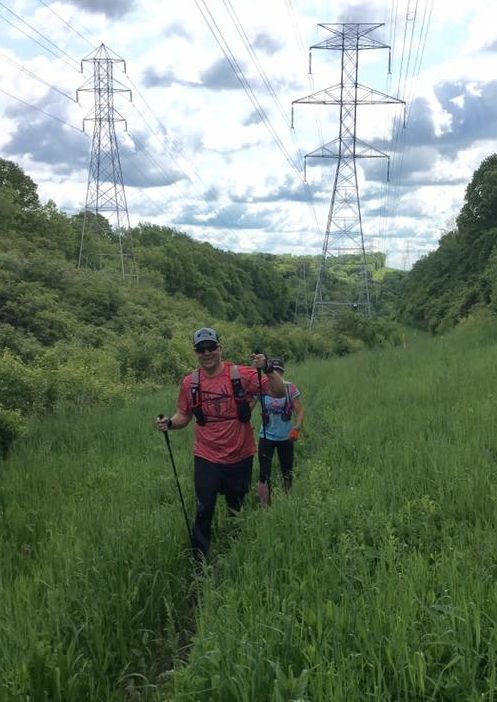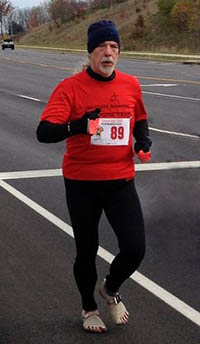A marathon is a long, slow race that covers 26 miles and 385 yards — a distance determined during the 1908 Olympics in London so King Edward VII could view both the start and the finish of the race from the comfort of his royal surroundings. The race began at Windsor Castle, and the course went through London to the royal entrance to White City Stadium, before runners took a lap around the track to the finish line in front of the royal box.
It’s a race that demands a time-consuming commitment from most runners, and a training program that is several months long. The race itself takes even the most elite runners more than two hours to complete, with the majority of people taking up to five hours to finish. The average time for men is four hours and 20 minutes, while the average woman finishes in 4 hours and 45 minutes.

Now, the 5K is quick. It’s simple. It’s the metric standard of 5,000 meters. The English equivalent is 3.1 miles. Training time is measured in weeks. Many runners finish in 30 minutes. The best break the 15-minute mark. Completing multiple 5Ks a month is possible. It’s by far the most common race. In 2015, 7.6 million people ran one.
And some of the latest science and medical data show those running the shorter distance may have the right idea. Training and running 5Ks may bring more benefits and risk fewer injuries than logging the hundreds of miles needed to run and complete a full marathon training program. For a 5K, you run fewer miles, but often at a higher intensity. As a result, the workouts are shorter, but maximize fitness gains, according to a recent article at Nate Silver’s data site.
But local runners say just looking at measurable health difference doesn’t paint a full picture.
“It’s endurance for me, but I feel that as runners were not overly concerned about one race being more ‘superior’ than another,” said Tony Deal of Covington. “We’re just happy to see others out there pushing themselves and enjoying running.”
John Barry, a runner from Florence, said the scientific explanation leaves out what for many people are the major reasons for running — the chance to challenge yourself, and the opportunity to go out on long, easy runs with a group of friends and fellow runners.
“Training for and racing in 5Ks does a better job of meeting my personal fitness goals,” Barry said. “That said, completing a marathon was more than checking an item off my bucket list. Training for it required me to exercise mental and physical discipline that had been beyond my experience, and was a joy of a different sort. Perhaps counter-intuitively, training for a marathon as part of a group was a far more social experience than training for a 5K is.”

One can never discount the social benefits of running around town with friends, being able to explore your hometown on foot, or going on increasingly popular “tourist runs,” which take groups of visitors on runs through vacation destinations. Such runs often require stamina over speed, in part because you stop early and often, but wind up running long distances over a few hours.
Of course, for many, both a 5K and a marathon are important goals. And training elements of either race — as well as those in between — can and should be incorporated into all runners’ fitness programs.
“Both are equally important,” said Kirk Ealy, from Cincinnati.
“The way I see it, long distance runners should incorporate a speed workout at least once a week, and short-distance runners should do one longer, slower run each week. Aerobic and anaerobic intermingled during a training cycle is key, but (how much) depends on what you are going to race.”
Aerobic exercises tend to be longer and lower intensity, such as distance running, which builds endurance. Anaerobic exercises tend to be short and higher intensity, such as sprinting or weightlifting, and tend to build strength and speed.
The advice cited to many runners is to build up their distance slowly over a period of weeks and months — no more than a 10 percent increase a week. And that advice also includes the benefits of tapering — cutting back on your mileage now and then, and particularly in the week or two before your race.
Sarah Dills, also of Cincinnati, said her doctor has long warned her about some of the injuries one can endure from the constant pounding on the legs and knees that are sometimes brought on my long distance running and training for longer runs. And it has worked — sometimes.
“This summer I majorly cut back on mileage and focused on building speed and strength,” she said, “and I’ve not been in better shape in a long time. But I’ll be back for the marathon in the fall. For me, the longer distance is more about pushing myself mentally — and the shorter distance is the physical struggle.”

Paul Long writes weekly for the NKyTribune about running and runners. For his daily running stories, follow him at dailymile.com or on Twitter @Pogue57

















